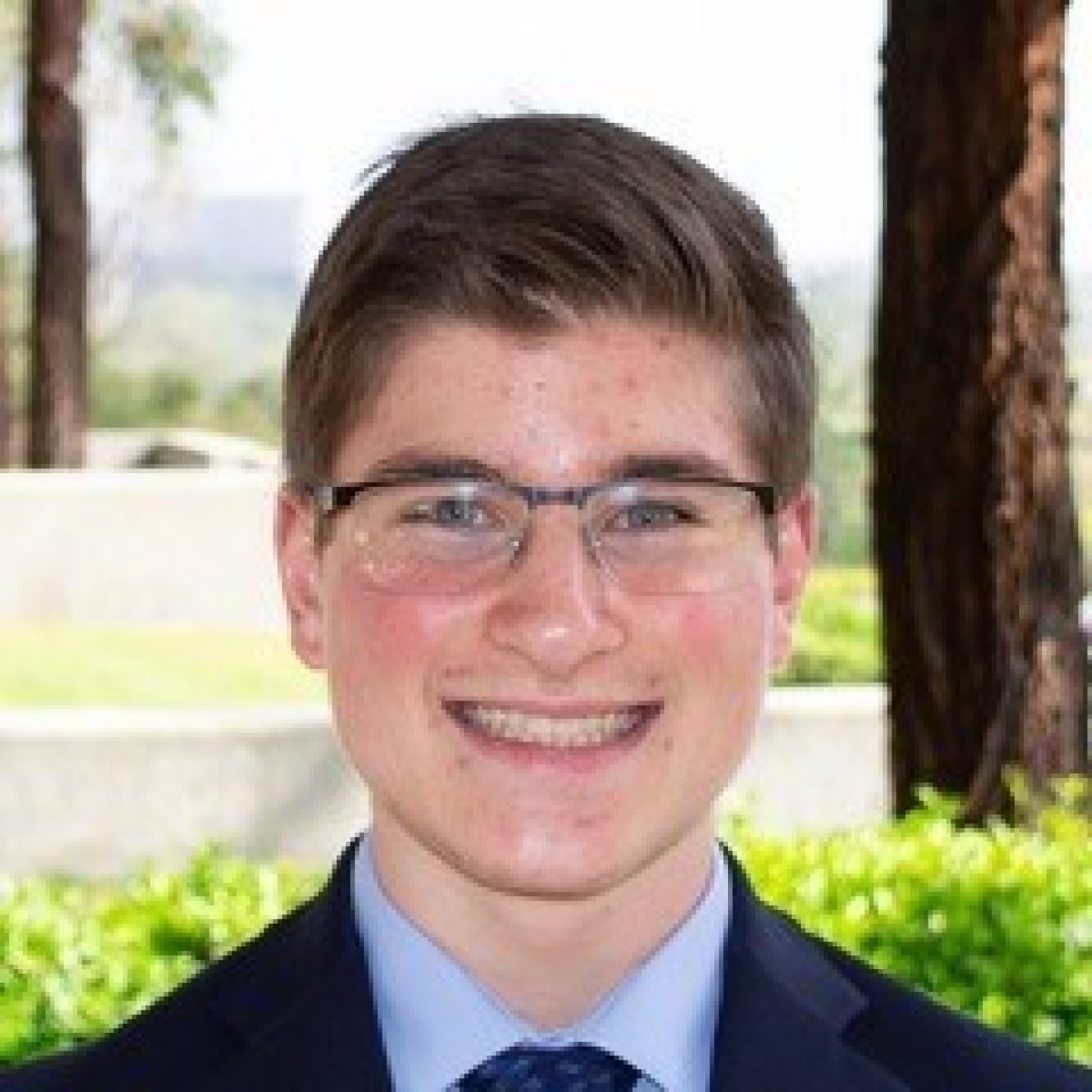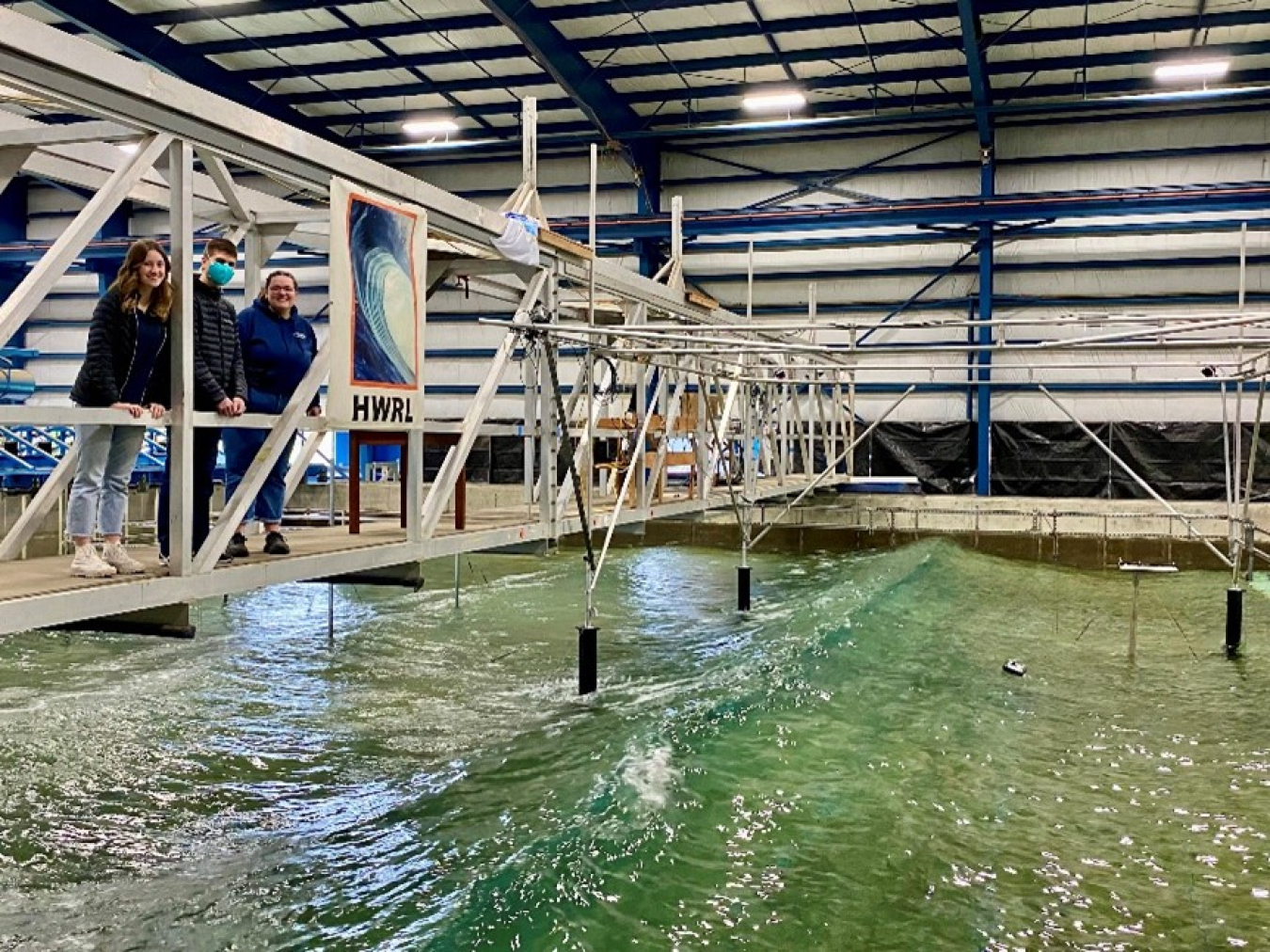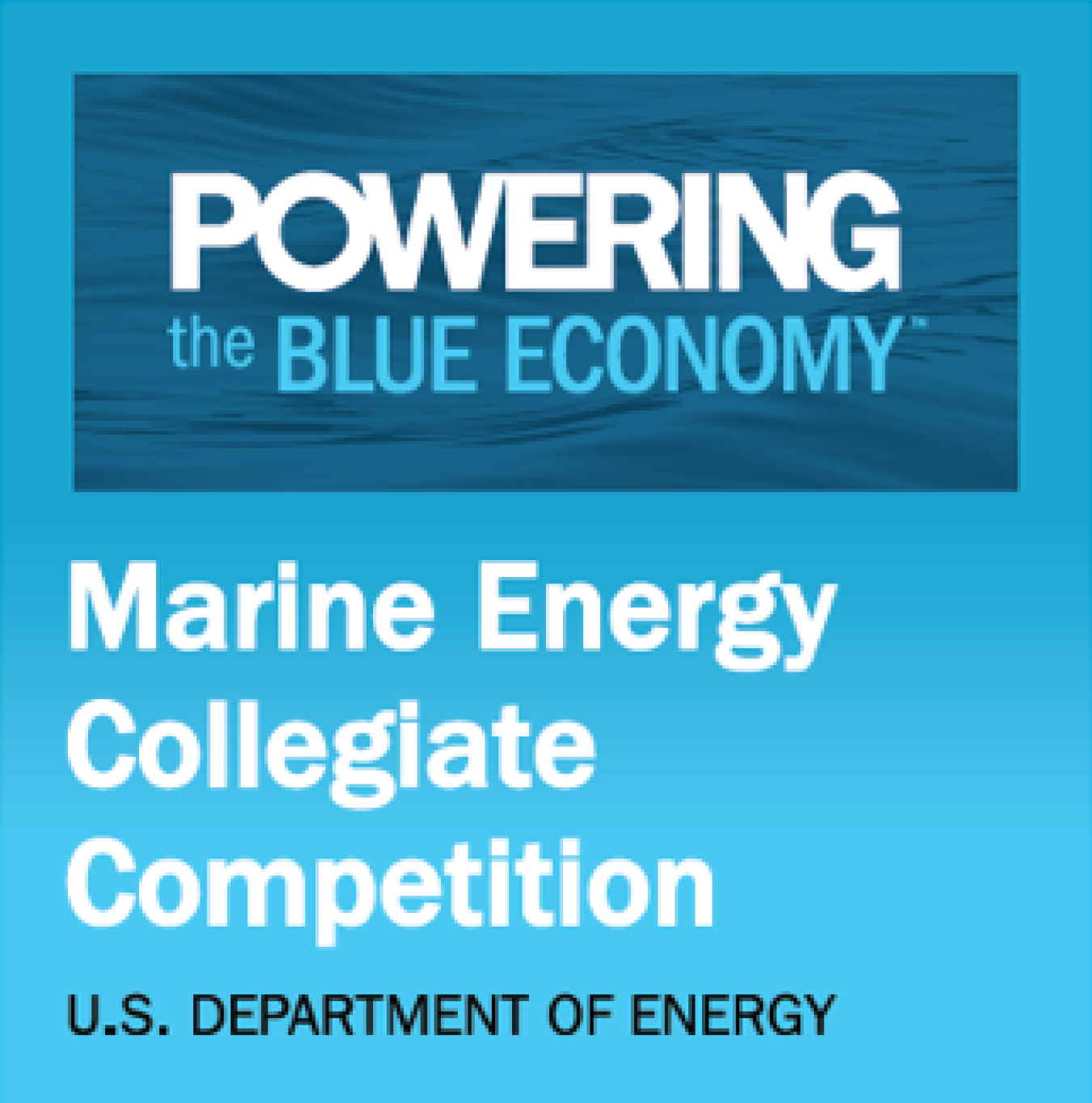Nicholas May-Varas participated in the 2021 and 2022 Marine Energy Collegiate Competitions on the Oregon State University team. Learn why he thinks increasing access to renewable energy is so important and his advice for the next generation.
Water Power Technologies Office
July 1, 2022Nicholas May-Varas doesn’t have a typical scientist origin story. He didn’t build mini rocket ships in his backyard or dismantle his parents’ electronics to get a look at their guts. There was no moment after which he knew that someday he would become a scientist.

As a participant of the 2022 MECC, May-Varas helped his team develop a wave energy converter.
Throughout his childhood and teenage years, May-Varas sheltered foster dogs, tutored fellow students in mathematics, and volunteered at the Oregon Food Bank and with an organization that helps make solar energy a more affordable option for individual homeowners. Pair that humanitarian spirit with a passion for engineering sustainable solutions, and May-Varas found his home: humanitarian engineering.
“Humanitarian engineering is about developing innovative technologies, like those used to harness marine energy,” May-Varas said. “It’s also about increasing access to sustainable solutions—to make sure all communities can benefit from these solutions.”
Recently, this young humanitarian participated in the 2021 and 2022 Marine Energy Collegiate Competitions (MECC) as a member of the Oregon State University (OSU) team, which took home second place in the 2022 competition. Back in high school, May-Varas was already set on pursuing a career in the marine energy industry, but MECC gave him a chance to tackle new and complex energy challenges, build real-world experience and professional connections, and jump-start his clean energy career.
Now a research engineer at Ocean Motion Technologies, May-Varas shared his thoughts about why increasing access to renewable energy is so important, how MECC boosted his career, and what advice he has for the next generation of marine energy researchers.
---
This interview is part of a series of profiles featuring MECC alumni. The competition is funded by the U.S. Department of Energy’s Water Power Technologies Office and administered by the National Renewable Energy Laboratory. It has been edited for clarity and length.
You said that even before college you were interested in marine energy. What attracted you to the field?
I was looking for opportunities to meld sustainability with mechanical engineering, and renewable energy technologies were very applicable. Marine energy stood out because it’s very practical. Earlier, I was interested in solar energy, so I was like, ‘OK, maybe chemical engineering' [because solar panels are made from chemically constructed photovoltaic cells]. But marine energy gave me the opportunity to work on both sustainable solutions and mechanical engineering.
And you’ve been pursuing it ever since—while working on your bachelor’s degree in mechanical engineering from OSU and as a research engineer for Ocean Motion Technologies. What, specifically, do you work on?
One of Ocean Motion Technologies’ missions is to develop marine energy technologies—primarily wave energy converters [which transform ocean waves into electricity]—to power ocean technologies, like sensors. I develop numerical models to analyze a wave energy converter’s dynamics and mechanical power output, so we can understand how the device might perform when we deploy it into the open ocean and how can we improve its design.
Meaning, models can help developers understand how to build better marine energy devices?
Right. Our main objective is to increase the validity of the models’ results. By increasing their accuracy, we can better predict how [the device is] going to react to different environmental conditions.
Did MECC help prepare you for your role with Ocean Motion Technologies?
MECC definitely provided me with the opportunity to continue learning and be involved with the marine energy industry. I had conducted marine energy research with the Pacific Marine Energy Center before joining MECC; having the opportunity to directly apply some of that research in a competition was really beneficial for me, [as] someone working in ocean technologies and moving into the marine energy industry. And having the skill set to work in an interdisciplinary team and a collaborative environment is very critical to success in any industry.
Tell me more about your experience with MECC—what did your team work on?
This year, our team developed a wave energy converter that produces electricity for an onshore desalination plant [which processes salt water to create clean drinking water]. One of my roles was to use numerical models to predict the dynamics of the device. Before MECC, I didn’t have much experimental experience. MECC provided me with a foundation to use numerical models, conduct experiments, and then compare the results, so I have a better understanding of how those numerical models compare to real-world results and how we can improve models to better predict the actual system.
Have those skills helped you excel in your job at Ocean Motion Technologies?
I gained a lot more experience actually designing a wave energy converter with my MECC team. I got to experience the whole design process from initial customer requirements all the way through design specifications. That helped me understand what is necessary to build a wave-powered desalination device and how we can make them more applicable to communities, whether that be providing clean water in disaster relief situations or for remote island and coastal communities.

May-Varas (center) with OSU teammates Chantel Berger and Emma King test their wave energy converter prototype in the water for the 2022 MECC Build & Test Challenge.
How important are career development opportunities like MECC?
These opportunities are critical, not only to go through the design process, but also to get involved in a lot of different aspects of a marine energy project. For example, in MECC, we developed a business plan and tested our device through the design phase. Having the opportunity to become directly involved in all those processes in one competition is such an effective way to learn. That’s really beneficial for anyone interested in any sustainable technology.
Many members of the public still have not heard about marine energy—what would you say to get them to care about this budding industry?
I would first tell them how essential renewable technologies are to society. How they're necessary to provide sustainable solutions for communities all over the world. Marine energy, in particular, can be a complementary solution to other forms of renewable energy. So, for example, when solar power or wind energy is not available, marine energy can provide consistent renewable energy. And vice versa, when marine energy is not as strong, solar energy and wind turbines can provide more power. These complementary solutions can be applicable for communities as they develop their sustainable energy goals and help provide everyone with the opportunity to access a wide variety of solutions.
What future marine energy challenge are you most excited to tackle?
I’m really excited about improving numerical models; we can always make them more accurate and more robust. I’m really interested in continuing to use numerical models as part of the research and development phase because, like any other emerging technology, marine energy can be very expensive. Using these tools to reduce those costs and barriers of entry can be beneficial to companies and communities looking to implement marine energy.
In an ideal world, what would you hope to achieve? What would that ideal world look like?
One of the main things I hope to achieve is to provide access to reliable renewable energy systems to everyone, no matter where they live. And to develop these solutions not just to provide power, but also to enable communities to live more sustainably and receive economic benefits beyond that power—whether that’s using the technology to desalinate water and provide fresh water to water-scarce communities or to generate clean electricity to power our homes and lives.
What advice would you give to a future MECC competitor or anyone interested in joining the marine energy industry?
Try many things. In MECC, there are opportunities to learn about the business development side but also the design and engineering side of marine energy. Because MECC is such an interdisciplinary competition, I recommend trying all these new things, whether [you think] you’re interested in them or not—see if you like them and figure out what your role might be on your team as well as in the marine energy industry.
What’s next?
I’ll continue working at Ocean Motion Technologies, likely in a part-time role. This summer I'll be working at the National Renewable Energy Laboratory with the ocean technologies department. Then, I’m going to graduate school in the fall.
Interested in joining the Science, Technology, Engineering, and Mathematics (STEM) workforce? Visit the U.S. Department of Energy’s Marine Energy STEM Portal to learn about other renewable energy career pathways and workforce development opportunities. Follow MECC to get inspired by the 2023 cohort of competitors.


